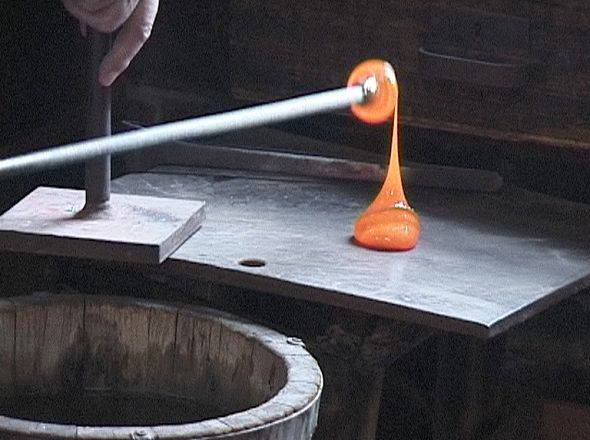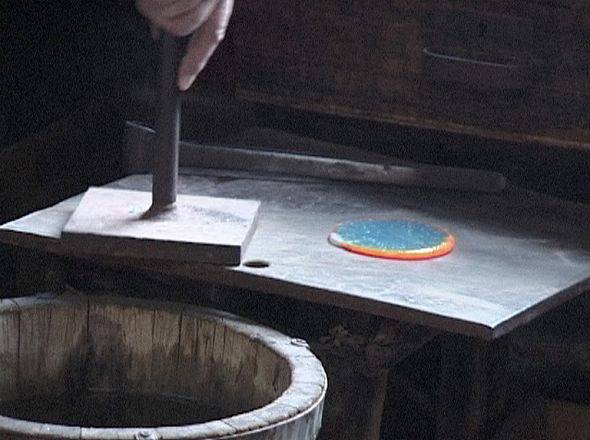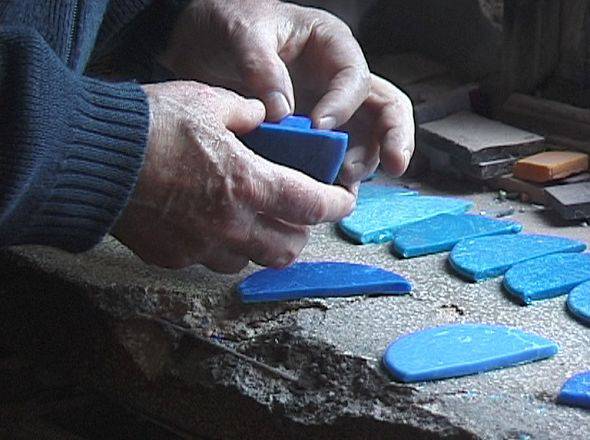Description
The glass tessera are the primary material of late-Roman and early Christian mosaics from the 4th century. The mosaicist's work is based on cutting tessera from slabs provided by glassworks. The preparation technique, which is simple, is not fundamental: what is important is the ability of the composer to obtain a wide chromatic range of opaque glass.
Fused glass is poured from a crucible onto a metal surface and flattened in the shape of a round plate. In the case of gold or silver leaf mosaic, the metal leaf is laid on the plate, then a square, cut from blown glass, is laid on the surface. When the plate is placed in the furnace, the thin glass drips and adheres to the leaf and protects it.
The plate is then cold-cut and the tessera are used b the mosaicist in his compositions.
The Ravenna and Venetian mosaic styles should be mentioned. In the first one, which is very old, the tessera are placed directly on the cement of the brickwork wall, thereby producing an irregular movement of the tessera and a vivacious multi-light effect.
In the Venetian style, which dates from the 19th century, the tessera are glued onto cardboard, then applied on the other side of the wall. The surface is flat.



